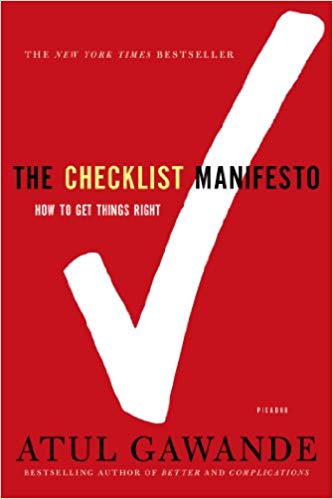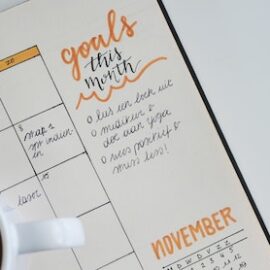

This article is an excerpt from the Shortform summary of "The Checklist Manifesto" by Atul Gawande. Shortform has the world's best summaries of books you should be reading.
Like this article? Sign up for a free trial here .
In 1935, before the use of the “Boeing checklist,” the Army Air Corps asked airplane manufacturers for a new long-range bomber. Boeing’s Model 299, which exceeded specifications, was favored over models by Martin and Douglas. However, during a flight competition held by the Army in Dayton, Ohio, the Boeing model stalled at 300 feet and crashed, killing two of five crew members.
We’ll cover how the Boeing checklist was developed, how it has saved the lives of crew and passengers, and how you can make your own effective checklist.
Creating the Boeing Checklist
The plane was much more complicated than previous aircraft — the pilot had more steps to follow and forgot to release a new locking mechanism on the elevator and rudder controls. After the accident, a newspaper called the new model “too much airplane for one man to fly.” The Army Air Corps chose Douglas’s smaller design, and Boeing took a big financial hit.
Nonetheless, the Army bought a few Model 299s as test planes and a group of test pilots studied how to prevent future pilot errors. Instead of focusing on requiring longer training, they came up with a pilot’s Boeing checklist. Flying up to that point had not been especially complicated, but flying the new plane required too many details to be left to memory.
The test pilots made their Boeing checklist simple, clear, and concise — it fit on an index card — with step-by-step checks for takeoff, landing, and taxiing. Using the checklist, pilots went on to fly the bomber, which became the B-17 Flying Fortress, 1.8 million miles without incident. The Army ordered 13,000, and the bomber gave the allies a big air advantage in World War II.
Checklists have become essential in aviation, averting problems and accidents. In notebook and electronic forms, they’re a standard and crucial part of pilot training and aircraft operation.
Creating a Checklist like Boeing’s Checklist
Daniel Boorman, flight desk designer for Boeing, is an expert at developing checklists. He’s analyzed thousands of crashes and mishaps in an effort to figure out how to create checklists that prevent human errors.
Boorman’s Boeing checklists fill a thick spiral-bound handbook with tabs. Yet each Boeing checklist is brief, consisting of a few lines on a page in large, easy-to-read type. Each applies to a different situation; together they encompass a range of scenarios. At the beginning of the notebook are what pilots call “normal” checklists for routine operations — for instance, steps to take before starting the engines. They’re followed by “non-normal” checklists for emergency situations such as engine failure, smoke in the cockpit, or an insecure door.
Over two decades, Boorman has learned how to make checklists that work. There are key differences between bad and good checklists.
Bad checklists are:
- Unclear and imprecise.
- Too long, impractical, and difficult to use.
- Created by pencil pushers who lack experience doing what their checklists dictate.
- Overly detailed. They try to spell out every single step, as if the users are clueless.
- Mind-numbing, rather than engaging.
Good checklists:
- Are precise, efficient, concise, practical, and easy to use even in the most difficult circumstances.
- Don’t try to spell out everything. They provide reminders of only the most important steps that even an experienced professional could miss.
Boeing’s Daniel Boorman recommends doing two things to create a checklist as effective as Boeing checklists:
1) Define a clear ‘“pause point” or logical break in the workflow at which the checklist is to be used.
2) Decide whether to create a Do-Confirm list or a Read-Do list.
To use a Do-Confirm checklist, team members perform their jobs from memory. Then they stop and go through the checklist and confirm that everything that was supposed to be done was done. To use a Read-Do checklist, people carry out the tasks as they read them off, like a recipe.
Once you’ve chosen the type of checklist, follow these guidelines:
- Keep the checklist short, typically five to nine items.
- Focus on the “killer” items or steps that are most dangerous to miss.
- Keep the wording simple and exact.
- Use language and terminology familiar to the user.
- Fit the checklist on one page.
- Test your checklist in the real world — have people use it and provide feedback.
Learn from Boeing checklists to create your own effective checklists.
———End of Preview———

Like what you just read? Read the rest of the world's best summary of "The Checklist Manifesto" at Shortform . Learn the book's critical concepts in 20 minutes or less .
Here's what you'll find in our full The Checklist Manifesto summary :
- How checklists save millions of lives in healthcare and flights
- The two types of checklists that matter
- How to create your own revolutionary checklist






